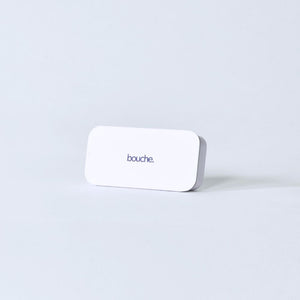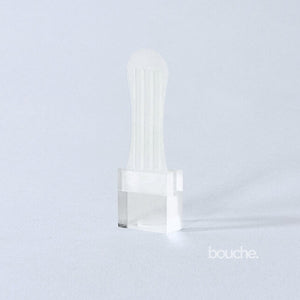Each year, fatigue-related crashes lead to thousands of injuries and deaths. Many of these are preventable. Sleep deprivation affects your reaction time, focus, and judgment - all of which are critical for safe driving. Understanding the causes, warning signs, and prevention strategies is essential for anyone who wants to protect themselves and others. This article breaks down the science behind drowsy driving, highlights the latest research, and offers practical, evidence-backed solutions—including the role of sleep hygiene and mouth tape for sleeping.
What is Drowsy Driving?
Drowsy driving happens when someone drives while overly tired or sleep-deprived. Even without fully falling asleep, fatigue can impair your ability to focus, react quickly, and make safe decisions.The effects of drowsy driving are comparable to those of driving under the influence of alcohol, making it a serious public health concern. In the U.S. alone, drowsy driving is estimated to cause thousands of crashes and hundreds of deaths every year. As our lives get busier and sleep gets pushed aside, the risk of driving while fatigued is only rising.
Understanding Drowsy Driving
Drowsy driving happens when a person is too tired to drive safely. Fatigue reduces alertness, impairs judgment, and can even cause “microsleeps”—brief moments when the brain shuts down for a few seconds, often without the driver realizing it. Even if you don’t actually fall asleep, being sleep-deprived can make you less attentive, more easily distracted, and slower to react to hazards on the road.
How Common Is Drowsy Driving?
- Up to 21% of fatal car crashes in the U.S. may involve drowsy driving.
- About 24% of drivers admit to driving while so fatigued they struggled to keep their eyes open at least once in the past month.
- Drowsy driving is underreported because it’s hard to prove after a crash.
Drowsy driving is more common than most people think. Many drivers underestimate just how dangerous it is to get behind the wheel when tired, and the statistics show that the risk is real and widespread.
Common Causes of Drowsy Driving
Several factors can lead to driving while fatigued, including:
- Sleep deprivation: Not getting enough sleep is the most common cause. Most adults need 7–9 hours of sleep per night, but many fall short.
- Sleep disorders: Conditions like obstructive sleep apnea disturb sleep quality and can leave people feeling tired during the day, even after a full night’s rest.
- Medications: Many prescription and over-the-counter drugs list drowsiness as a side effect. This includes sleep aids, antihistamines, antidepressants, and cold medications.
- Alcohol: Even small amounts of alcohol can increase sleepiness and impair driving ability, especially when combined with fatigue.
- Time of day: The body’s natural sleep-wake cycle makes people more likely to feel sleepy between midnight and 6 a.m. and in the mid-afternoon.
- Long or irregular work hours: Shift workers, long-haul drivers, and people working multiple jobs are at higher risk.
- Driving long distances without breaks: Extended periods behind the wheel can lead to fatigue, especially if rest stops are skipped.
It’s also important to note that lifestyle factors—like high stress, inconsistent sleep schedules, and poor sleep hygiene—can add to the risk. For example, people who use screens late at night or have noisy sleeping environments are more likely to be sleep deprived.
Warning Signs of Drowsy Driving
Recognizing the signs of drowsy driving is vital for prevention. If you notice any of these symptoms, it’s time to pull over and rest:
- Frequent yawning or rubbing your eyes
- Difficulty focusing, frequent blinking, or heavy eyelids
- Trouble remembering the last few miles driven
- Drifting from your lane, tailgating, or hitting rumble strips
- Missing exits or traffic signs
- Feeling restless, irritable, or more easily annoyed than usual
- Nodding off or having trouble keeping your head up
Ignoring these warning signs can have serious consequences. Take them seriously and stop to rest if needed. Many drivers try to fight through fatigue, but the body’s need for sleep will eventually win out, sometimes with tragic results.
Risks and Consequences of Drowsy Driving
The effects of drowsy driving are more severe than many realize. Key risks include:
- Decreased reaction time: Fatigue makes it harder to respond quickly to sudden changes or hazards.
- Impaired judgment: Drowsiness clouds decision-making, making drivers more likely to take risks or misjudge situations.
- Microsleeps: Brief, involuntary episodes of sleep can last a few seconds—enough time to cause a crash.
- Higher risk of crashes: Drowsy drivers are much more likely to be involved in accidents, especially single-vehicle crashes and those involving high speeds.
- Long-term health impacts: Chronic sleep deprivation can lead to heart disease, high blood pressure, and weakened immunity.
- Legal consequences: In many states, causing an accident while driving drowsy can lead to serious legal and financial penalties.
Drowsy Driving vs. Drunk Driving
The impairment from being awake for 18–24 hours is similar to having a blood alcohol concentration (BAC) above the legal limit. Both slow reaction times, reduce alertness, and increase the risk of crashes. The difference is that drowsy driving often goes unnoticed and unpunished, making it even more dangerous.
Prevention Strategies
The most effective way to prevent drowsy driving is to prioritize good sleep and healthy habits. Here’s what the research recommends:
Get Enough Quality Sleep
- Adults should aim for 7–9 hours of sleep per night.
- Teens need 8–10 hours.
- Maintain a consistent sleep schedule, even on weekends.
Manage Sleep Disorders
- If you snore loudly, wake up gasping, or feel tired despite sleeping enough, talk to a doctor about possible sleep disorders like obstructive sleep apnea.
- Treatments such as CPAP therapy or mouth tape for sleeping can help improve sleep quality and reduce daytime drowsiness, especially for mild cases of sleep apnea.
Use Mouth Tape for Sleeping
Mouth tape is a science-backed, non-invasive tool that encourages nasal breathing during sleep. Nasal breathing filters, humidifies, and regulates airflow, which can improve sleep quality and reduce snoring. Studies show that mouth taping can:
- Reduce snoring and sleep apnea symptoms in some people
- Improve oxygen uptake and support deeper, more restorative sleep
- Help maintain proper jaw alignment and even influence facial structure over time
For those interested in trying mouth tape, Bouche’s medical-grade mouth tape is designed for comfort and safety, making it suitable for sensitive skin and compatible with CPAP therapy for people with sleep apnea. Bouche mouth tape is hypoallergenic, latex-free, BPA-free, and fragrance-free, so it’s gentle enough for nightly use. Thousands of users have reported waking up more refreshed, with less dry mouth and snoring, after just a week of use.
Plan Ahead for Long Trips
- Avoid driving during your body’s natural “sleepy” periods (midnight–6 a.m. and mid-afternoon).
- Take regular breaks every 100 miles or 2 hours.
- Share driving duties with a companion, if possible.
- Schedule rest stops and avoid overly long driving days.
Avoid Alcohol and Sedating Medications
- Never drive after drinking alcohol, even in small amounts.
- Check medication labels for drowsiness warnings and avoid driving if you feel sleepy.
Use Caffeine Wisely
- Caffeine can provide a temporary boost in alertness, but its effects wear off quickly and should not be relied on for long-term alertness.
- Best used in combination with a short nap if you need to stay awake for a short period.
Don’t Rely on “Tricks” to Stay Awake
- Opening windows, turning up the radio, or blasting the AC are not effective ways to combat fatigue and can distract you from the road.
What to Do if You Feel Drowsy While Driving
If you start to feel sleepy or notice any warning signs:
- Pull over to a safe, well-lit area as soon as possible.
- Take a 15–20 minute nap. Even a short nap can restore alertness.
- Drink a cup of coffee or other caffeinated beverage for a temporary boost, but don’t rely on caffeine alone.
- Switch drivers if you’re traveling with someone else.
- Do not try to “push through” fatigue. Your safety and the safety of others depend on your alertness.
It’s also a good idea to keep healthy snacks and water in your car, as dehydration and low blood sugar can add to feelings of tiredness. If you’re on a long trip, plan your stops in advance and make sure you’re well-rested before starting out.
Bouche: A Simple Step Toward Safer Days
Bouche Wellness Inc. is dedicated to improving health through evidence-based, non-invasive tools that support better breathing and deeper sleep. Our flagship product, a premium medical-grade mouth tape, promotes nasal breathing during sleep—helping reduce snoring, support jawline definition, and enhance overall vitality. Bouche mouth tape is designed for comfort, safety, and sensitive skin, and is CPAP-compatible for those with sleep apnea. By supporting natural breathing patterns, Bouche empowers you to wake up refreshed, alert, and ready for the day.
Bouche’s mouth tape is easy to use: simply prep your lips, apply the tape horizontally, and let it gently seal your lips while you sleep. The result is deeper, more restorative rest, less dry mouth, and a calmer, more focused mind. Thousands of users have shared positive experiences, noting improvements in energy, mood, and even relationships thanks to quieter, more restful nights. For anyone struggling with mouth breathing, snoring, or disrupted sleep, Bouche offers a simple, effective solution.
Conclusion
Drowsy driving is a preventable risk that affects everyone on the road. By understanding the causes, recognizing the signs, and adopting science-backed prevention strategies—including prioritizing sleep and considering tools like mouth tape for sleeping—you can protect yourself and others from the dangers of driving while fatigued. Make sleep a non-negotiable part of your wellness routine, and take action at the first sign of drowsiness behind the wheel.
For more on how to improve your sleep and overall health, visit Bouche’s website and start your journey toward better rest today.
FAQs
Q. What is the solution for drowsy driving?
The best solution is to get 7–9 hours of quality sleep each night, manage sleep disorders, take regular breaks on long drives, and use tools like mouth tape to improve sleep quality.
Q. What are 3 signs you are driving drowsy?
- Frequent yawning or heavy eyelids
- Difficulty focusing or drifting from your lane
- Trouble remembering the last few miles driven
Q. How common is drowsy driving?
Drowsy driving is involved in up to 21% of fatal crashes in the U.S., and about 24% of drivers admit to driving while extremely fatigued at least once a month.
Q. What is most likely to cause drowsiness in drivers?
Sleep deprivation is the most common cause, but sleep disorders, certain medications, alcohol, and long or irregular work hours also contribute.
Q. Is drowsy driving as dangerous as drunk driving?
Yes, being awake for 18–24 hours impairs driving as much as having a blood alcohol level above the legal limit.
Q. Can mouth tape really help with drowsy driving?
Not directly. But it helps improve sleep quality, which reduces daytime fatigue — a major cause of drowsy driving.
By making sleep a priority and using science-backed tools like mouth tape for sleeping, you can help ensure every journey is a safe one—for yourself and everyone on the road. For more tips and products to support your sleep health, check out Bouche.








